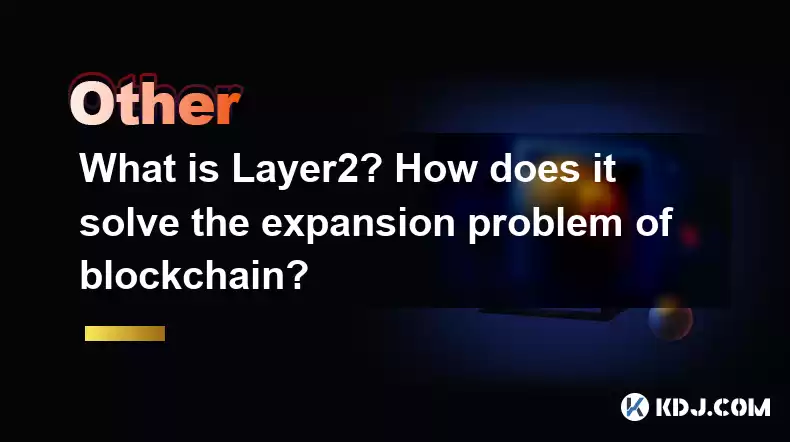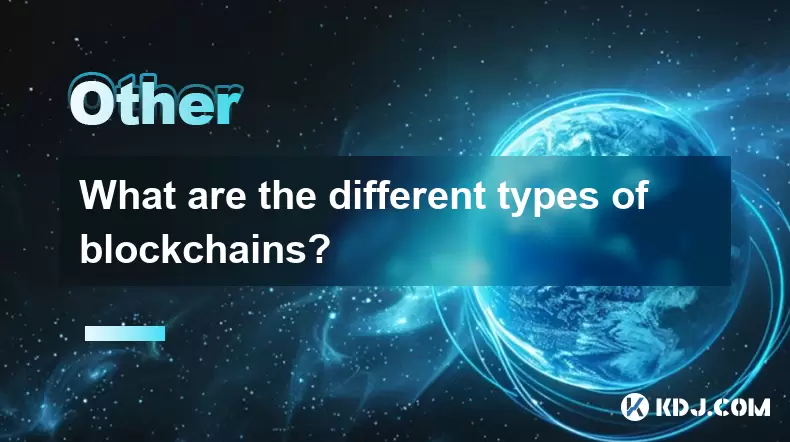-
 Bitcoin
Bitcoin $112400
-1.07% -
 Ethereum
Ethereum $3409
-3.27% -
 XRP
XRP $2.784
-6.60% -
 Tether USDt
Tether USDt $0.9997
-0.03% -
 BNB
BNB $739.3
-2.09% -
 Solana
Solana $158.0
-2.90% -
 USDC
USDC $0.9998
-0.02% -
 TRON
TRON $0.3213
-0.94% -
 Dogecoin
Dogecoin $0.1929
-5.01% -
 Cardano
Cardano $0.6974
-2.82% -
 Hyperliquid
Hyperliquid $36.69
-2.31% -
 Sui
Sui $3.327
-4.80% -
 Stellar
Stellar $0.3672
-5.18% -
 Chainlink
Chainlink $15.65
-3.07% -
 Bitcoin Cash
Bitcoin Cash $525.0
-1.68% -
 Hedera
Hedera $0.2291
-6.00% -
 Avalanche
Avalanche $20.91
-2.96% -
 Ethena USDe
Ethena USDe $1.000
0.00% -
 Toncoin
Toncoin $3.520
-1.12% -
 UNUS SED LEO
UNUS SED LEO $8.968
0.14% -
 Litecoin
Litecoin $105.7
0.26% -
 Shiba Inu
Shiba Inu $0.00001181
-1.79% -
 Polkadot
Polkadot $3.492
-2.08% -
 Uniswap
Uniswap $8.800
-3.10% -
 Dai
Dai $0.9999
-0.01% -
 Monero
Monero $289.9
-3.17% -
 Bitget Token
Bitget Token $4.243
-1.27% -
 Pepe
Pepe $0.00001006
-3.67% -
 Cronos
Cronos $0.1248
-5.68% -
 Aave
Aave $249.7
-2.50%
What is Layer2? How does it solve the expansion problem of blockchain?
Layer2 solutions enhance blockchain scalability and efficiency by processing transactions off-chain, reducing fees and improving user experience.
Apr 27, 2025 at 01:36 pm

Layer2 refers to a set of solutions built on top of a blockchain, often referred to as Layer1, to improve scalability and efficiency. These solutions aim to address the inherent limitations of blockchain technology, particularly in terms of transaction speed and cost. By processing transactions off the main blockchain, Layer2 solutions can significantly increase the throughput and reduce the fees associated with transactions.
The Need for Layer2 Solutions
The primary blockchain, or Layer1, such as Bitcoin and Ethereum, often faces challenges in scaling to meet the growing demand for transactions. Scalability is a critical issue because as more users join the network, the number of transactions increases, leading to slower transaction times and higher fees. This is where Layer2 solutions come into play, offering a way to handle transactions more efficiently without compromising the security and decentralization of the underlying blockchain.
How Layer2 Solutions Work
Layer2 solutions work by processing transactions off the main blockchain and then settling them back on the blockchain in batches. This approach reduces the load on the main blockchain, allowing for faster and cheaper transactions. There are several types of Layer2 solutions, including sidechains, state channels, and rollups. Each type has its own mechanism for handling transactions and interacting with the main blockchain.
Types of Layer2 Solutions
Sidechains
Sidechains are separate blockchains that are connected to the main blockchain through a two-way peg. This allows assets to be transferred between the main blockchain and the sidechain. Sidechains can process transactions more quickly and at a lower cost because they are not subject to the same constraints as the main blockchain. Once the transactions are processed on the sidechain, they can be settled back on the main blockchain.
State Channels
State channels are another type of Layer2 solution that allows participants to conduct multiple transactions off-chain and then settle the final state on the main blockchain. This method is particularly useful for applications that require frequent interactions between parties, such as gaming or micropayments. By processing transactions off-chain, state channels can significantly reduce the load on the main blockchain and lower transaction fees.
Rollups
Rollups are a more recent innovation in Layer2 solutions. They work by bundling multiple transactions into a single transaction that is then processed on the main blockchain. There are two main types of rollups: Optimistic Rollups and Zero-Knowledge Rollups. Optimistic Rollups assume that transactions are valid by default and only perform a fraud proof if challenged, while Zero-Knowledge Rollups use cryptographic proofs to ensure the validity of transactions. Both types of rollups can increase the throughput of the main blockchain and reduce transaction costs.
Benefits of Layer2 Solutions
Layer2 solutions offer several benefits to the blockchain ecosystem. Increased scalability is a primary advantage, as these solutions can handle a higher volume of transactions without overloading the main blockchain. Reduced transaction fees are another significant benefit, making blockchain technology more accessible to a broader audience. Additionally, Layer2 solutions can improve the user experience by providing faster transaction times and more efficient processing.
Challenges and Considerations
While Layer2 solutions offer many advantages, they also come with their own set of challenges and considerations. Security is a crucial concern, as any vulnerabilities in the Layer2 solution could potentially affect the security of the main blockchain. Interoperability between different Layer2 solutions and the main blockchain is another important factor, as seamless integration is necessary for widespread adoption. Additionally, regulatory compliance may pose challenges, as different jurisdictions may have varying requirements for Layer2 solutions.
Implementing Layer2 Solutions
Implementing Layer2 solutions involves several steps and considerations. Here's a detailed guide on how to implement a Layer2 solution:
Choose the appropriate Layer2 solution: Depending on your specific needs, you may opt for sidechains, state channels, or rollups. Consider factors such as scalability requirements, transaction frequency, and security needs.
Set up the infrastructure: For sidechains, you'll need to create a separate blockchain and establish a two-way peg with the main blockchain. For state channels, you'll need to set up off-chain channels for transaction processing. For rollups, you'll need to develop the necessary infrastructure to bundle and process transactions.
Integrate with the main blockchain: Ensure that your Layer2 solution can seamlessly interact with the main blockchain. This may involve developing smart contracts or other mechanisms to facilitate the transfer of assets between the Layer2 solution and the main blockchain.
Test and validate: Before deploying your Layer2 solution, thoroughly test and validate its functionality. This includes testing transaction processing, security measures, and interoperability with the main blockchain.
Deploy and monitor: Once your Layer2 solution is ready, deploy it and closely monitor its performance. Be prepared to make adjustments and improvements as needed to ensure optimal performance and user satisfaction.
Frequently Asked Questions
Q: How do Layer2 solutions impact the decentralization of the main blockchain?
A: Layer2 solutions can enhance the scalability of the main blockchain without compromising its decentralization. By processing transactions off-chain, Layer2 solutions reduce the load on the main blockchain, allowing it to maintain its decentralized nature. However, the choice of Layer2 solution and its implementation can affect the degree of decentralization, so careful consideration is necessary.
Q: Can Layer2 solutions be used with any blockchain?
A: While many Layer2 solutions are designed to work with specific blockchains like Ethereum, some solutions are more versatile and can be adapted to work with different blockchains. The compatibility of a Layer2 solution depends on its design and the specific requirements of the blockchain it is intended to work with.
Q: What are the potential risks associated with using Layer2 solutions?
A: The primary risks associated with Layer2 solutions include security vulnerabilities, interoperability issues, and potential regulatory challenges. Ensuring the security of the Layer2 solution is crucial, as any vulnerabilities could impact the main blockchain. Additionally, achieving seamless interoperability between different Layer2 solutions and the main blockchain can be challenging. Regulatory compliance is another area of concern, as different jurisdictions may have varying requirements for Layer2 solutions.
Q: How do Layer2 solutions affect the overall user experience on a blockchain network?
A: Layer2 solutions can significantly improve the user experience on a blockchain network by providing faster transaction times and lower fees. By processing transactions off-chain, Layer2 solutions reduce the load on the main blockchain, leading to quicker transaction confirmations. This can make blockchain technology more user-friendly and accessible to a broader audience.
Disclaimer:info@kdj.com
The information provided is not trading advice. kdj.com does not assume any responsibility for any investments made based on the information provided in this article. Cryptocurrencies are highly volatile and it is highly recommended that you invest with caution after thorough research!
If you believe that the content used on this website infringes your copyright, please contact us immediately (info@kdj.com) and we will delete it promptly.
- BlockDAG, SEI, Ethena: Top Crypto Performers Under the Microscope
- 2025-08-03 10:50:16
- Bitcoin Blasts Past $119K: How Institutional Adoption and Macro Shifts Fuel the Fire
- 2025-08-03 10:55:16
- Crypto, Grok, and August: Decoding the Latest Trends and Insights
- 2025-08-03 11:10:16
- Crypto, Phishing, and Your Wallet: A New Yorker's Guide to Staying Safe
- 2025-08-03 10:30:16
- Troller Cat Meme Coin Presale Soars: A New King in the Crypto Jungle?
- 2025-08-03 10:30:16
- Grayscale, Altcoin Trust, and Mid-Cap Mania: What's the Deal?
- 2025-08-03 08:50:16
Related knowledge

What is the difference between on-chain and off-chain transactions?
Aug 02,2025 at 04:22pm
Understanding On-Chain TransactionsOn-chain transactions refer to digital asset transfers that are recorded directly on a blockchain ledger. These tra...

What is the double-spending problem and how does blockchain prevent it?
Aug 02,2025 at 01:07pm
Understanding the Double-Spending ProblemThe double-spending problem is a fundamental challenge in digital currency systems where the same digital tok...

What is the difference between a blockchain and a database?
Aug 01,2025 at 09:36pm
Understanding the Core Structure of a BlockchainA blockchain is a decentralized digital ledger that records data in a series of immutable blocks linke...

How does blockchain handle scalability?
Aug 02,2025 at 02:58pm
Understanding Blockchain Scalability ChallengesBlockchain scalability refers to a network's ability to handle an increasing volume of transactions wit...

What are the different types of blockchains?
Aug 03,2025 at 03:01am
Public Blockchains: Open and Decentralized NetworksPublic blockchains are the most widely recognized type of blockchain, characterized by their open a...

What is a hash in a blockchain?
Aug 02,2025 at 05:28am
Understanding the Concept of Hash in BlockchainA hash in the context of blockchain technology refers to a unique digital fingerprint generated by a cr...

What is the difference between on-chain and off-chain transactions?
Aug 02,2025 at 04:22pm
Understanding On-Chain TransactionsOn-chain transactions refer to digital asset transfers that are recorded directly on a blockchain ledger. These tra...

What is the double-spending problem and how does blockchain prevent it?
Aug 02,2025 at 01:07pm
Understanding the Double-Spending ProblemThe double-spending problem is a fundamental challenge in digital currency systems where the same digital tok...

What is the difference between a blockchain and a database?
Aug 01,2025 at 09:36pm
Understanding the Core Structure of a BlockchainA blockchain is a decentralized digital ledger that records data in a series of immutable blocks linke...

How does blockchain handle scalability?
Aug 02,2025 at 02:58pm
Understanding Blockchain Scalability ChallengesBlockchain scalability refers to a network's ability to handle an increasing volume of transactions wit...

What are the different types of blockchains?
Aug 03,2025 at 03:01am
Public Blockchains: Open and Decentralized NetworksPublic blockchains are the most widely recognized type of blockchain, characterized by their open a...

What is a hash in a blockchain?
Aug 02,2025 at 05:28am
Understanding the Concept of Hash in BlockchainA hash in the context of blockchain technology refers to a unique digital fingerprint generated by a cr...
See all articles

























































































